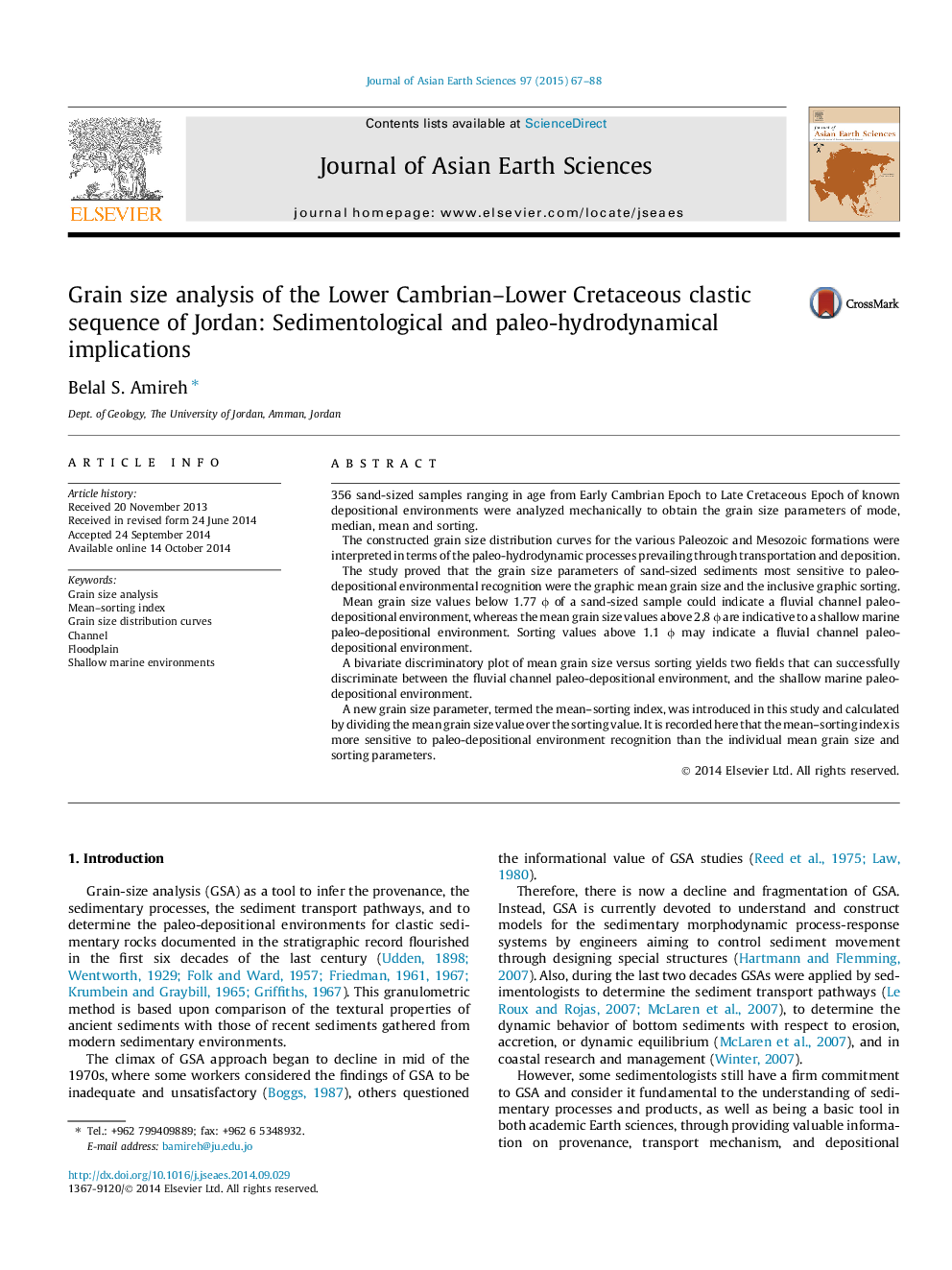| کد مقاله | کد نشریه | سال انتشار | مقاله انگلیسی | نسخه تمام متن |
|---|---|---|---|---|
| 4730607 | 1356767 | 2015 | 22 صفحه PDF | دانلود رایگان |
• Graphical grain size parameters are calculated for 356 Cambrian–Cretaceous sandstones.
• Grain size distribution curves are interpreted in terms of paleo-hydrodynamic processes.
• Most sensitive parameters to determine depositional environment are mean and sorting.
• Specific values of mean and sorting indicate channel and shallow marine environment.
• Mean–sorting index is introduced and applied to determine the depositional environment.
356 sand-sized samples ranging in age from Early Cambrian Epoch to Late Cretaceous Epoch of known depositional environments were analyzed mechanically to obtain the grain size parameters of mode, median, mean and sorting.The constructed grain size distribution curves for the various Paleozoic and Mesozoic formations were interpreted in terms of the paleo-hydrodynamic processes prevailing through transportation and deposition.The study proved that the grain size parameters of sand-sized sediments most sensitive to paleo-depositional environmental recognition were the graphic mean grain size and the inclusive graphic sorting.Mean grain size values below 1.77 ϕ of a sand-sized sample could indicate a fluvial channel paleo-depositional environment, whereas the mean grain size values above 2.8 ϕ are indicative to a shallow marine paleo-depositional environment. Sorting values above 1.1 ϕ may indicate a fluvial channel paleo-depositional environment.A bivariate discriminatory plot of mean grain size versus sorting yields two fields that can successfully discriminate between the fluvial channel paleo-depositional environment, and the shallow marine paleo-depositional environment.A new grain size parameter, termed the mean–sorting index, was introduced in this study and calculated by dividing the mean grain size value over the sorting value. It is recorded here that the mean–sorting index is more sensitive to paleo-depositional environment recognition than the individual mean grain size and sorting parameters.
Journal: Journal of Asian Earth Sciences - Volume 97, Part A, 1 January 2015, Pages 67–88
